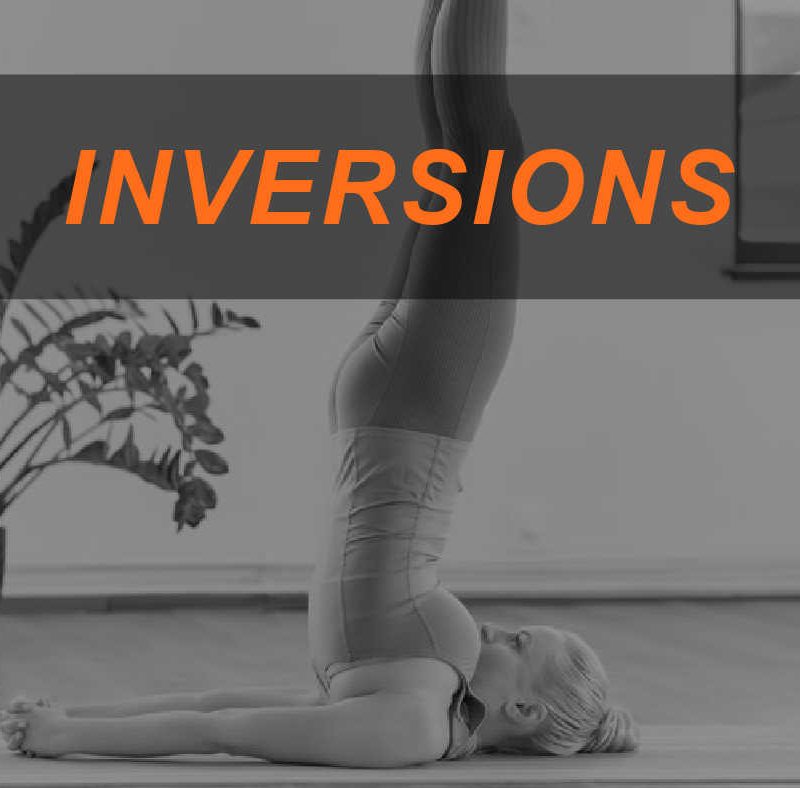
Inversions are a way to see the exercise world from a different angle, quite literally. Instead of being upright standing or sitting, or even supine on your back, inversions take you upside down.
Yoga and Pilates instructors often incorporate inversions in classes. These exercises also have tremendous value when used in gyms, other types of exercise classes, and in training sessions.
Benefits of Inversions
There are many benefits to inverting the body, and why you will see them frequently among those practicing yoga.
- By reversing the way in which we move, the joints get a little rest from the normal daily grind and force of gravity. Many people find a reduction in pain while performing inversions or using an inversion table.
- Many enjoy a reduction in stress. Who doesn’t need that?
- Circulation is likely to improve.
- Some feel energized after completing inversion exercises.
- Oftentimes the ability to focus and concentrate improves.
- Once a difficult pose is mastered it can be empowering.
Drawbacks
Inversions aren’t for everybody, including those with back or neck issues. As always, we must listen to our bodies for cues as to what works and what to avoid.
Clients should check with their physician for certain health conditions before attempting inversions.
Some exercises/poses require a lot of strength. Building up with practice and proper technique is the safest way to go. This also pertains to those movements that require a great deal of flexibility.
When performing inversions, be certain to clear the area of any obstructions to avoid injury.
Types of Inversions
• Back bend
• Handstand – Salamba Shirshasana
• Headstand – Sirsasana
• Shoulder stand
• L-stand (single leg or both)
• Bridge
• Legs up the wall – Viparita Karani
• Downward facing dog – Adho Mukha Svanasana
• Crab crawl
• Forward fold
Some people use an inversion table. Benefits of using an inversion table may include relief from back pain, a reduced stress level, increased flexibility, decompression, and muscle relaxation. To buy your own, plan to spend between $100-$1000. You’ll need space, but some fold up and can be stored easily.
Skill Set Requirements
Depending on the type of inversion, a certain skill set is likely required. Continual practice builds muscle memory, so these movements become more easily demonstrated.
A handstand or double leg L-stand needs upper body and core strength. Learning to do a handstand takes time and lots of practice. Add a pushup to a handstand and take it to a whole new level.
Balance is a necessity with all the stands.
If your client is able to lower legs overhead to the floor while holding a shoulder stand, this is a fabulous stretch. This movement also offers a gluteal strengthening component.
Flexibility is extremely helpful to perform back bends. An alternative for those not comfortable with full back bends is to use a stability ball. Lie on the ball with the back resting on the ball and arms stretched out in a T.
Bridge poses have so many options and are a great way to invert while building or maintaining leg and glute strength. Incorporate bands above knees or a bender ball between knees to increase intensity. Use a BOSU or stability ball to raise the bridge level.
Legs up the wall is a relaxing stretch offering numerous benefits, like destressing, reducing insomnia, and increasing lower back and leg flexibility.
A forward fold is an easy stretch as long as there are no back contraindications. The fold incorporates hamstrings, back and shoulders.
Essentially, not all inversions are intense and choosing an option that is achievable for all of your fitness clients can be beneficial to include into programming, especially at the end of any session.
References:
https://www.healthline.com/nutrition/yoga-inversion
https://teeter.com/blog/benefits-of-inversion/
https://www.ekhartyoga.com/articles/practice/all-about-yoga-inversions
https://medium.com/oxford-university/the-amazing-phenomenon-of-muscle-memory-fb1cc4c4726
https://nfpt.com/blog/inversion-table






